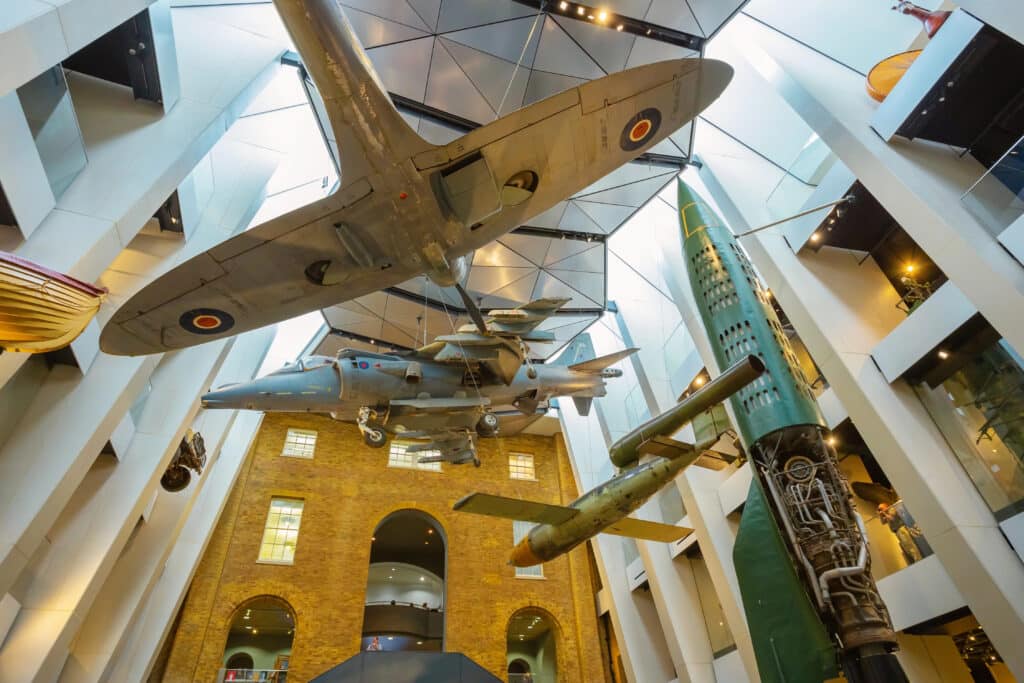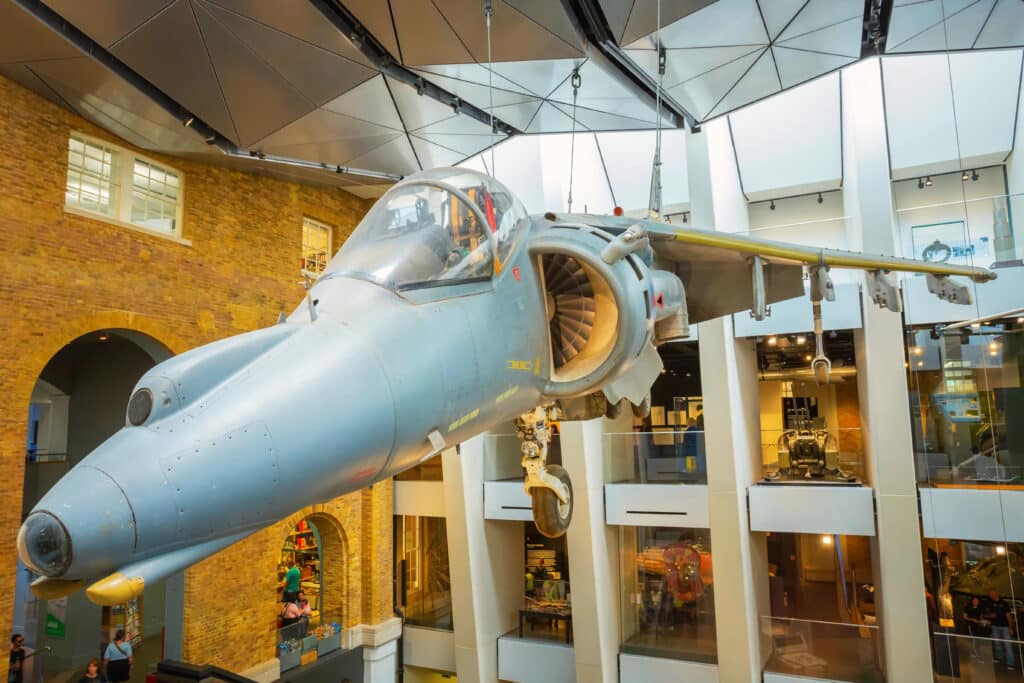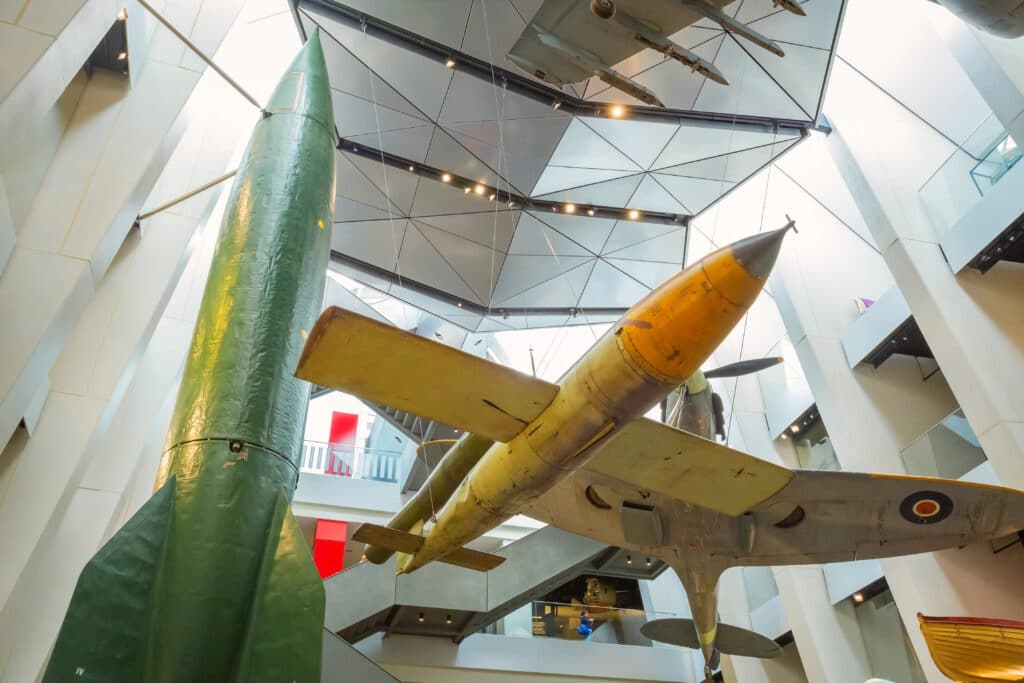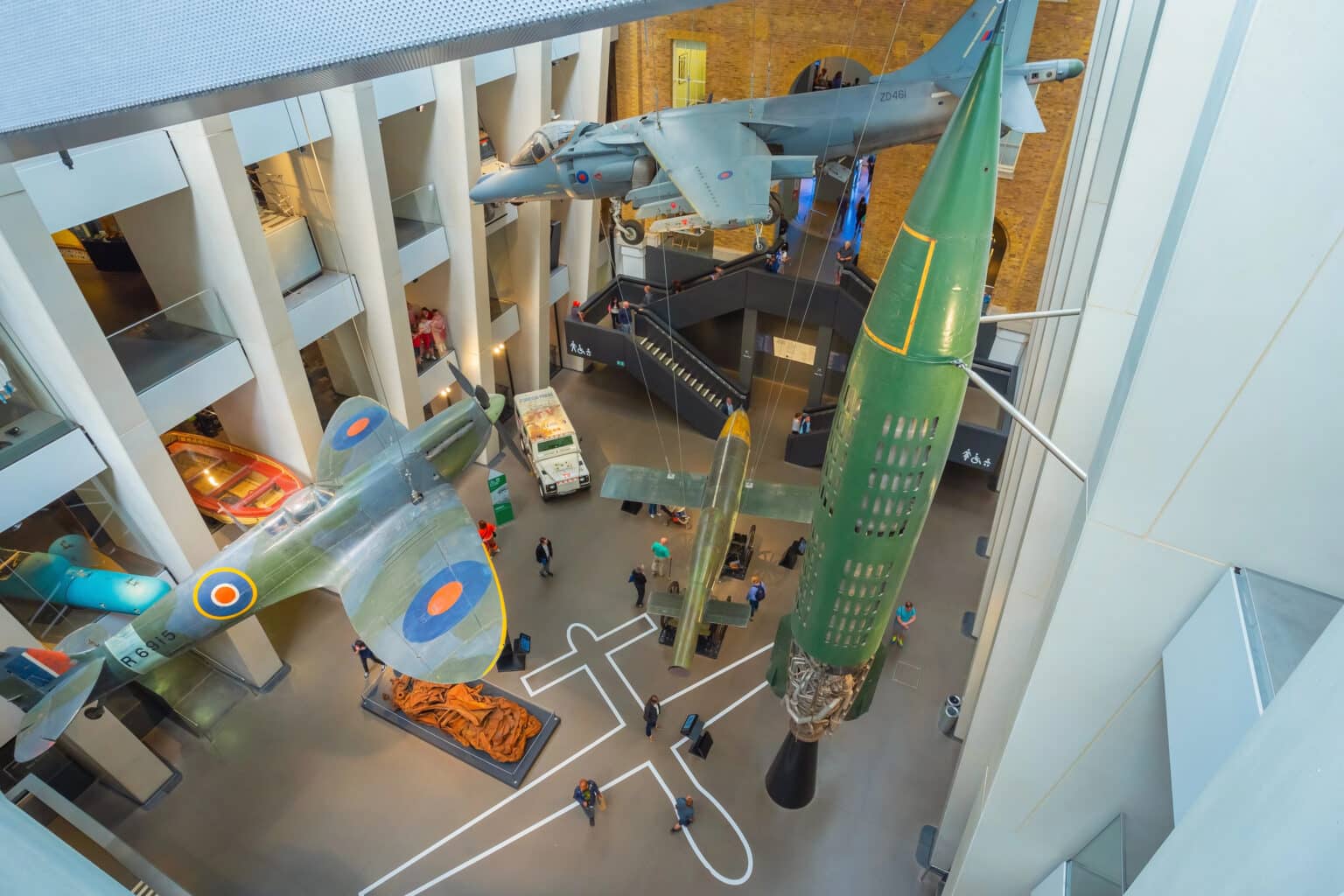We’ve covered the Imperial War Museum London in another article (which you can find here) so this time we thought we’d focus on the aircraft on display.
And let’s be fair, there aren’t that many. On the other hand, if you find yourself in central London with time to spare and really want to check out a Spitfire or a Harrier, going here is a lot quicker than travelling all the way up to the RAF Museum in Hendon. Plus, of course, you get to enjoy the rest of the museum too.
Table of Contents
What to see
The Supermarine Spitfire probably doesn’t need much introduction. The one on display here is a Mk. I, one of the very first production versions to see operational action (but not the oldest surviving Mk. I which you would have to travel to RAF Cosford to see). It was powered by a 1.030 HP Rolls-Royce Merlin engine which in combination with a 3-blade, 2-speed De Havilland propeller gave it a top speed of around 360 mph at 18.600 ft. The Spitfire remained in production until 1948 and saw active service with many different air forces until the 1960s. If you are seriously into Spitfires, a visit to IWM’s Duxford facility is an absolute must (we will be covering this in a future article), but the RAF Museums in Hendon and Cosford as well as the tiny Spitfire and Hurricane Memorial Museum at the former RAF Base in Manson are also worth visiting.

The Hawker Siddeley Harrier was developed in the 1960s and was the only fixed-wing aircraft capable of taking off and landing vertically (VTOL) for almost 5 decades until the arrival of the F-35 (several attempts were made but none of these ever made it into production, let alone active service). It saw combat action during the Falklands conflict service with several other air forces. The RAF retired their fleet of Harriers in 2011, but the Spanish Air Force recently announced that theirs will still be flying operationally beyond 2025.

Also on display are a V1 and a V2 rocket, but the only other aircraft (sort of) is a Japanese WWII Yokosuka MXY-7, better known by its nickname the “Ohka” — unfortunately, we haven’t procured a photo of this one. It was a single-seater, rocket-powered flying bomb on a one-way mission to destroy enemy ships and was deployed by Japan in the final desperate phase of the war. The allies quickly realized that Ohkas were a lot easier to destroy while they were still attached to their mother plane (which would carry them almost all the way to the target before releasing them) and launched a tactical effort to prevent them from getting any further. This, combined with the fact that Ohkas were hard to control for their young and unskilled pilots, meant that they never made a significant impact.

How much time to spend
The museum is very popular with tourists and often a bit crowded. We recommend that you either go early or late and set aside approximately 45 minutes to see the items mentioned in this article. As said, the rest of the museum is also highly interesting and the full experience will take you 1.5 – 2 hours.
How to get there
The museum is within walking distance from the Westminster area. The nearest Tube stations are Lambeth North (Bakerloo) and Elephant & Castle (Bakerloo, Northern Line).
Address
Lambeth Rd,
London SE1 6HZ





